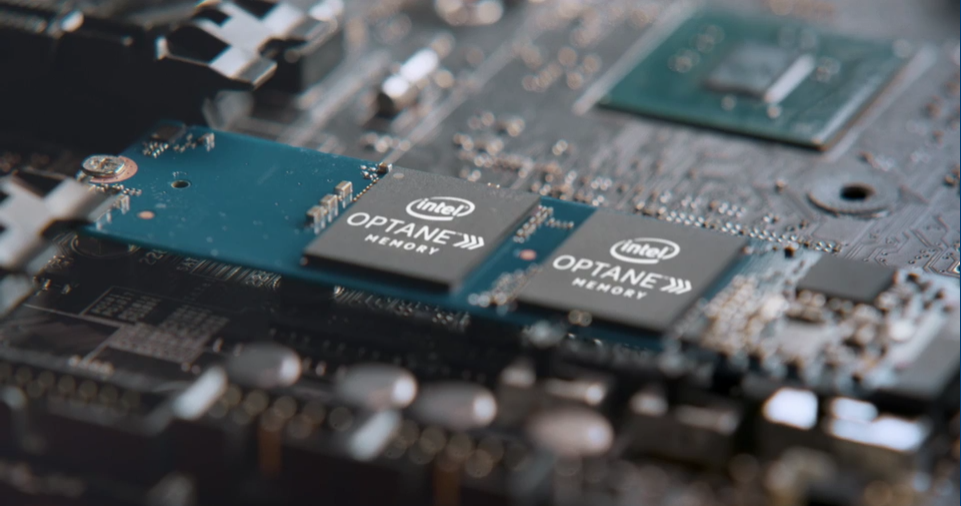Intel Optane 3D XPoint Memory Review
Why you can trust Tom's Hardware
Final Analysis
Optane Memory makes sense for accelerating hard disk drives. We said the same about the Intel 311 and 313 SSDs when Intel released them in 2011 and 2012. Smart Response Technology has improved over time, but that shouldn't surprise anyone. Intel improves its product designs nearly every year. This implementation just happens to coincide with the release of 3D XPoint, the first new mass-produced memory technology in 25 years.
Enthusiasts and power users will not benefit a great deal from Optane Memory. If your system already has an NVMe SSD, like a Samsung 960 Pro or even a low-cost Phison E7-based drive, Optane Memory will have a smaller performance impact. It may even reduce performance because you lose the ability to use custom NVMe drivers. If you use a hard drive as a secondary volume to install games or other software with a large footprint, Optane will increase your random read performance.
Gamers with files loaded on a hard disk drive represent a large part of the mainstream demographic. SSD prices are rising, and the number of high-performance products has declined over the last two years. The Intel 600p 1TB is your best option at this time, but you’re still spending $350 for a fairly small drive compared to a capacious hard disk drive. For the same money, you could purchase a 6TB hard drive and a 32GB Optane Memory drive. For just $9 more, you could even move to an 8TB HDD. If you look at pricing in the other direction, you could save $180 by choosing a 4TB HDD and a 16GB Optane Memory drive. That could go a long way towards a discrete video card or processor upgrade.
As you can imagine, there is more to the story. Official support begins with the 200-Series chipset, but many don’t feel the platform offers much over the previous generation products. We built an accelerated disk on a Z170 motherboard but did not have time to test the system's performance. With RST, the technology should also work on NVMe-enabled 9-Series motherboards with minimal effort. We’ll need more time to explore those options.
Personally, I’m not satisfied with our Optane Memory coverage today. We conducted seven series of tests. Each series requires roughly 18 to 24 hours on the new platform. I haven’t validated the Z270 series yet for use in storage reviews, and we only have a single system in place. I have two sets of validated test platforms and use four identical Z97 and four identical Z87 systems for testing NVMe and SATA products. Typically, we could generate millions of data points with a one-week lead-time, but Optane Memory caught us off guard.
With limited testing capacity, we felt it was better to produce an article that focused on mainstream users first. We will follow up later with an article focused on enthusiast users with aggressive settings, optimizations, and unofficial support testing.
As tested today with mainstream settings, Optane Memory performed as advertised. We observed increased performance with both a hard disk drive and an entry-level NVMe SSD. The value proposition for a hard drive paired with Optane Memory is undeniable. The combination is very powerful, and for many users, a better solution than a larger SSD.
Get Tom's Hardware's best news and in-depth reviews, straight to your inbox.
MORE: Best SSDs
MORE: How We Test HDDs And SSDs
MORE: All SSD Content

Chris Ramseyer was a senior contributing editor for Tom's Hardware. He tested and reviewed consumer storage.
-
Joe Black Some nice figures, but not quite what I expected from the hype. Not sure if its amazing enough that it warrants a whole exclusive series with special motherboards et al.Reply -
Brian_R170 The performance is better than I expected, but if I'm reading it right, the supported target market consists of desktops with 200-series chipsets and mechanical hard drives. That market just seems way too small. Am I missing something?Reply
Wake me up when the rumored Intel 900p Optane SSD starts sampling in 500GB and larger sizes. -
dstarr3 Reply19605577 said:What about an SHHD like the Seagate with 8gb cache?
This far exceeds the bandwidth of the SATA port you'd plug such a hard drive into, so you'd see no benefit over the SSHDs currently on the market. -
gdmaclew Target market seems a little small (intentionally?).Reply
I know this is early in the game but this has a slight RAMBUS smell to it. I hope I'm wrong.
I'll feel better when Intel at least offers licensing to other platforms (AMD).
-
hannibal In few year the support come to all PC platforms. And if this makes my hdd look like very fast ssd in normal usage... not bad at all.Reply
Am I wrong if the maximum size that the cache support is still 64Gb? Hopefully there will be that size too Sooner than later. Then there would be less cache misses. -
stairmand The problem I have is that I bought hybrid drives before and they were always a bit disappointing. The were mostly good but often crappy, not sure I'd want to tread that path again.Reply -
JamesSneed So if you have a 200-series chip set and a hard drive today this would be a really cheap storage upgrade. Interesting to see it doesn't really matter in real world testing as long as you are not using a spinning hard drive by itself regardless if its an nvme drive or Optane.Reply
